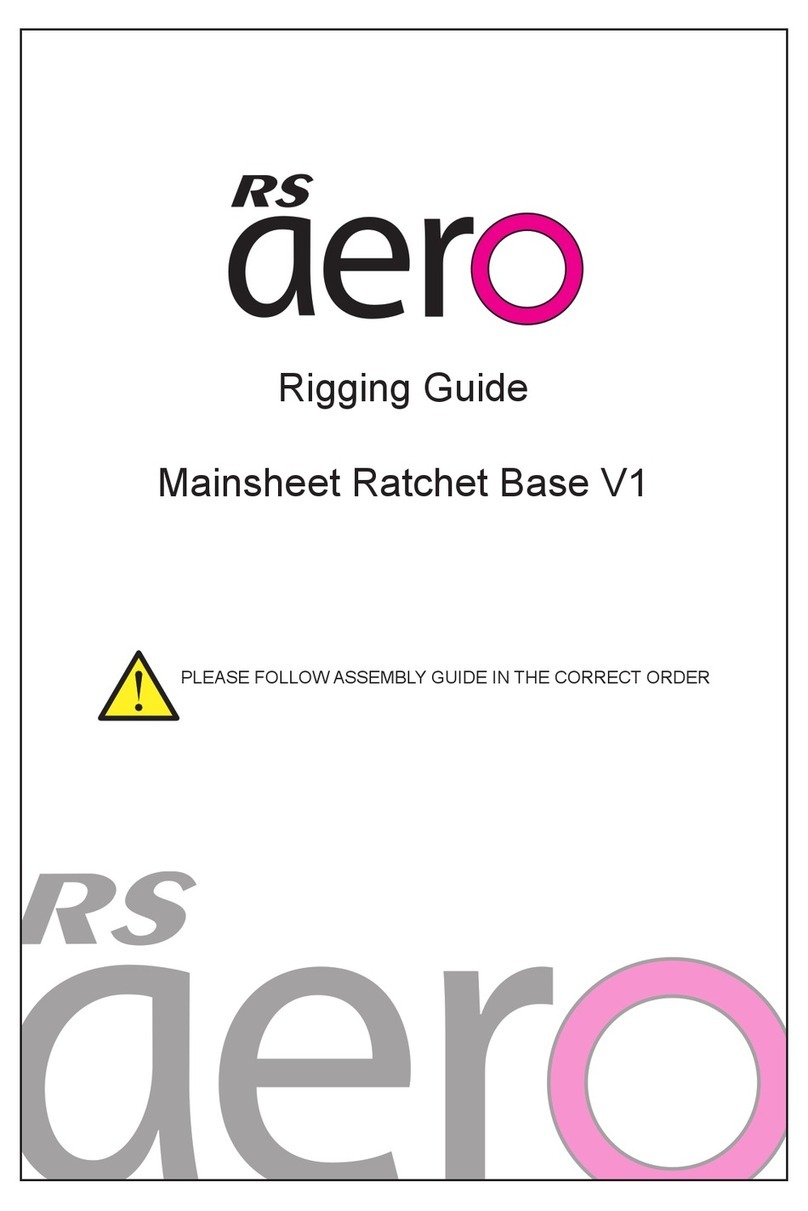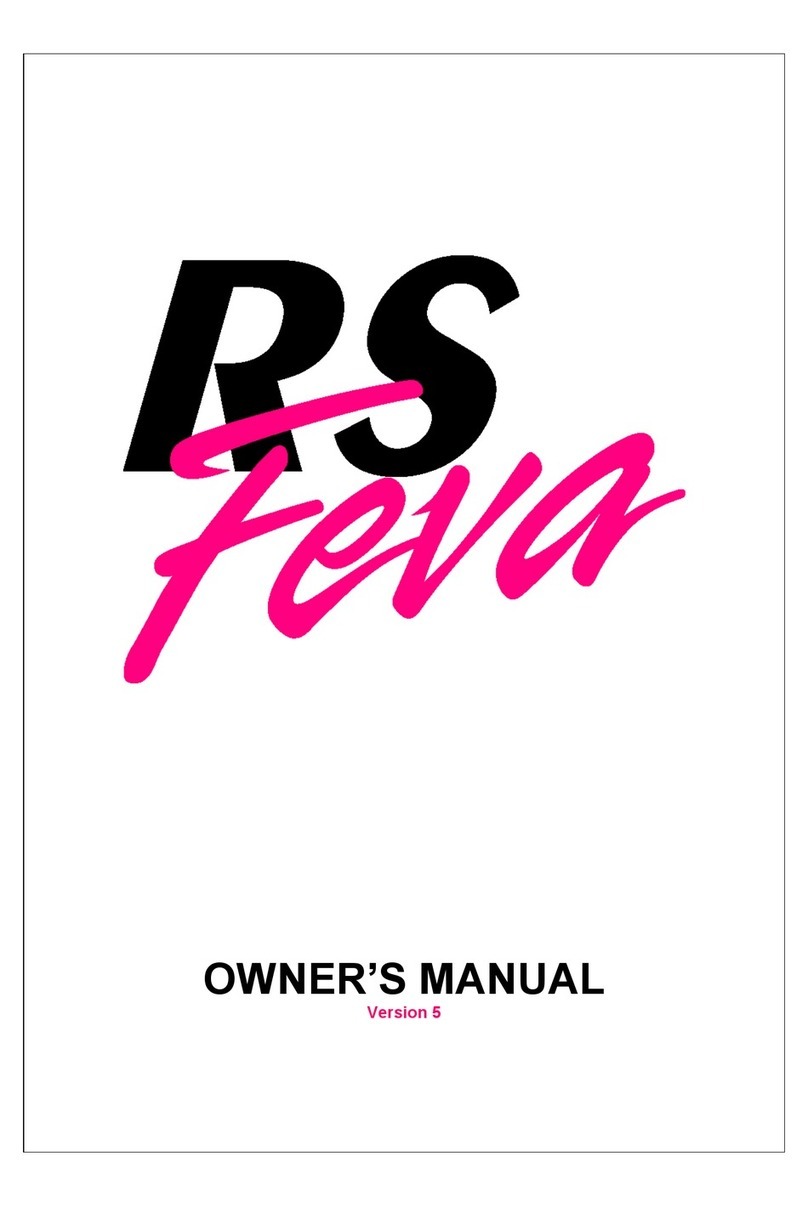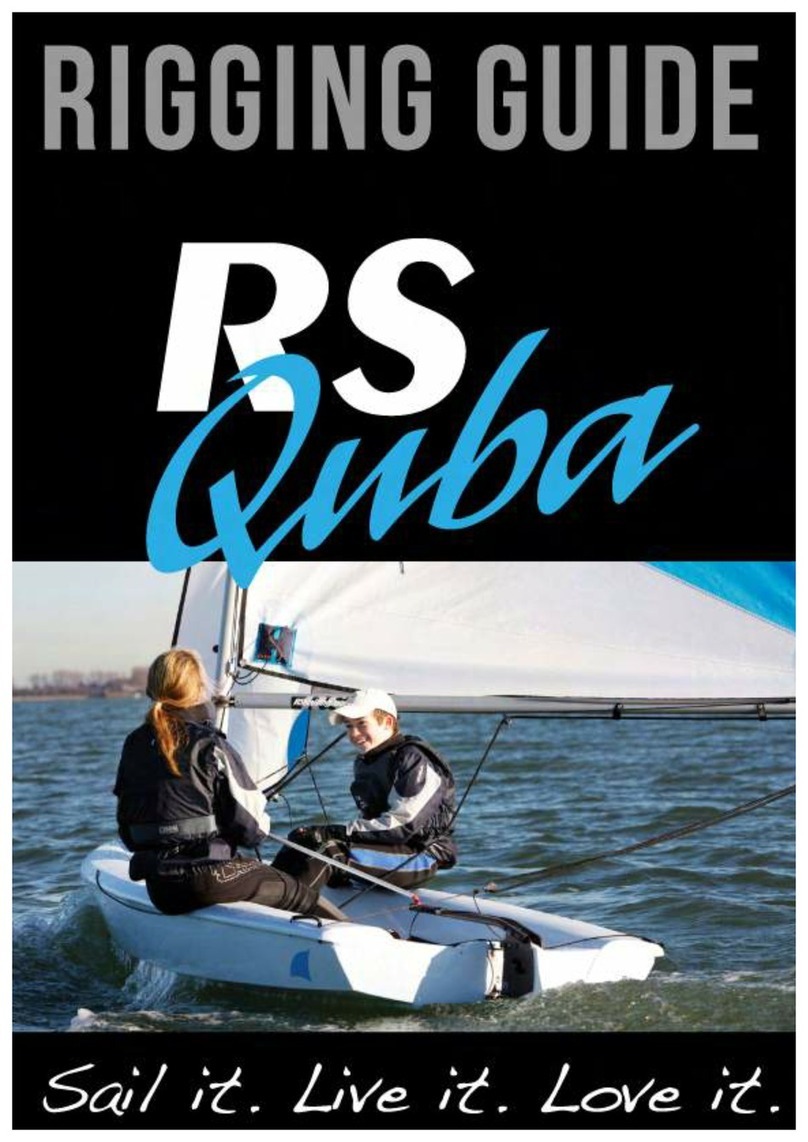1. INTRODUCTION
Congratulations on the purchase of your new RS100, and thank you for choosing an
RS product. We are confident that you will have many hours of great sailing and
racing in this truly excellent design. The RS100 is an exciting boat to sail and offers
fantastic performance. This manual has been compiled to help you to gain the
maximum enjoyment from your RS100, in a safe manner. It contains details of the
craft, the equipment supplied or fitted, its systems, and information on its safe
operation and maintenance. Please read this manual carefully and be sure that you
understand its contents before using your RS100.
This manual will not instruct you in boating safety or seamanship. If this is your first
boat, or if you are changing to a type of craft that you are not familiar with, for your
own safety and comfort, please ensure that you have adequate experience before
assuming command of the craft. If you are unsure, your RS Dealer, or your National
sailing federation – for example, the Royal Yachting Association – will be able to
advise you of a local sailing school, or a competent instructor.
For further information, spares, and accessories, please contact:






































